In This Article
After almost a year wandering around South America I decided to take a bit of a break in Buenos Aires, Argentina. I arrived in late April 2011 and finally left mid-September. Here I will share some of the useful resources and, hopefully, insights I have into this popular South American city.
“One thing you have to understand about Buenos Aires… it’s a seductive mistress. Given the proper weather, you could easily spend a few days here on vacation and convince yourself it’s the place to be. And you make these fantasies of spending your days living the porteño life in this enormous, beautiful metropolis which captures equal parts Paris and New York City. But then you set up residence here, and you find yourself in a torrentuous sea of people and places and HAZARDS, all around – a tumultuous mess of political turmoil, civil unrest and bad manners. And then the beautiful Athens of South America you fell in love with reveals its face as a gap-toothed, buggley-eyed whore.” – Jorge Farah
Lodging
Location
There are many decent neighborhoods to choose from, but most foreigners end up choosing Palermo, San Telmo, or the central area (Monserrat, Micro-center, Congreso). I think each has its own advantages and disadvantages, but generally speaking the local transportation system is efficient and easy to navigate so for shorter stays I think it won’t matter so much where you choose. For longer stays, questions about the type of environment you like as well as where your friends might be living will become more important considerations. Many foreigners choose Palermo for long-term stays because it is more upscale, has some nice parks and wider streets, and has more high end shopping, dining and nightlife options. For more detailed information about location options, check out Buenos Aires Barrios.
Hostel
When I first arrived in Buenos Aires a friend was already in town and staying in Hostel Arrabal so I stayed there. It is a nice hostel with friendly staff (if you go, say hello to Raul, Mariana, and Marcio for me), and it is among the lower priced options. I also really liked the location, though I think there are many other well-located hostels so that probably shouldn’t be considered a real differentiator if you are looking for a place to stay. In April it was low season and the atmosphere was fairly relaxed and the fellow guests were enjoyable. I can’t say how it might change in the high season. The kitchen is actually nicely equipped and modern but note that it is too small to serve a hostel of that size. Finally, note that they offer a discounted price for staying a week, but you must tell them ahead of time. Many people show up for a few days and end up staying much longer.
From my research and comments from others I have met, besides Arrabal you might consider Rayuela, America del Sur Hostel, Ostinatto, Hostel Estoril, and Sabatico in the central part of town.
Apartment
I spent my first week in the hostel looking for a room to rent. If you are interested in renting an apartment or room in Buenos Aires the good news is there are many useful websites to help you out. I think the three most useful will be the local Craigslist page, the Couchsurfing housemate search and flat share group, and CompartoDepto. You might also post something on the BAexpats site, use an agency, or try one of these additional sites:
- http://www.mundoanuncio.com.ar/zona/buenos_aires_99.html
- http://www.buscainmueble.com/
- http://propiedades.zonaprop.com.ar/
- http://www.inmuebles.clarin.com/
- http://roombuenosaires.blogspot.com/
Prices range a lot depending on where you want to live and what kind of setup you want. Generally speaking, anything in Palermo will either cost more or will give you much less space for the same amount (or both). However, an apartment in Palermo is much more likely to be modern. Recoleta will be more expensive still and if you are looking to rent something in Puerto Madero, consider making a donation to me! When I was searching in April 2011 a typical room in a shared apartment was going for between AR$1200 and AR$1600 though for nicer places prices went up significantly. I ended up in Congreso with a huge bedroom and some great roommates (great for practicing my Spanish) for AR$1500.
I had great luck with my apartment and landlord, a Porteña who was also one of my roommates, but I have heard some firsthand and multiple secondhand reports of dishonest and unscrupulous landlords so be careful. Also, be wary of anyone requiring you to pay in US dollars. I am not saying it is a sure warning sign, but it seems the bad apples do often ask for this from what I have heard. Regardless, there are no ATMs in the city where you can take out US dollars so it will be a PITA to take out pesos and convert them to dollars each month to pay your rent. If your landlord is willing to accept bank transfers that might be a different story.
Transportation
Generally speaking, transportation around the city of Buenos Aires is VERY cheap and easy to figure out thanks to two resources in particular: the Guia T and the Mapa Interactivo de Buenos Aires website. See more in the useful resources section below.
Retiro to Subway
All long-distance buses will arrive at the Reito bus station. Until you have at least a vague idea of the city layout you might want to stick to using the subway. Luckily, the entrance is quite close to the bus station. To find it, once you have arrived at the bus station, enter the terminal and head right. Keep walking until you see a ramp, walk down the ramp and you’ll be outside. Turn right and walk approximately 4 minutes until you see a little flea market outside a huge old building which is the train station. In front of it, you will have the subway station. Purchase a ticket for 1,10 pesos and board the “C” Line (also known as blue line). The subway from this stop only go one direction, so either wagon will do
Tips and Things to Know
- The only way to take out dollars in Argentina from ANY ATM is if you have a local account (and not only a local account, but a local dollar account). That is the ONLY way you can do it regardless of what other people might tell you.
- If you’re in Buenos Aires, the best thing to do is go to a Plataforma 10 booth – there’s one in Abasto Shopping and one in Palermo Alto. You can check times out online in advance and buying there is a lot simpler than Retiro and they sell tickets for all the lines, so no need to hop from booth to booth checking prices. They take credit cards and there is no surcharge. You probably won’t need passports (other than for credit card ID) but you will need the passport number of each traveler. (Ref: BAexpats thread)
- For a 90-day extension on your tourist visa, visit the Dirección Nacional de Migraciones (immigration office;011-4317-0200; Antártida Argentina 1355; 7:30am-1:30pm Mon-Fri) in Buenos Aires. You must do so during the week that your tourist visa is scheduled to expire. The fee is AR$100. (Ref: Lonely Planet site). Note, the BAexpats site threads always seem to strenuously advise against doing this, recommending instead to just go to Uruguay for the day.
Pluses and Minuses of Living in Buenos Aires
To this point I haven’t mentioned two important facts: (1) Many people absolutely adore Buenos Aires and living there and (2) I wasn’t one of them. Don’t misunderstand me, I don’t really dislike the city, but neither did I ever fully buy in to its supposed charms. For those who don’t want to hear just the sunny reports from the BsAs addicts out there, here is a basic table of pros and cons that might help.
| Pluses | Minuses |
| Buenos Aires is a city of great architecture and good infrastructure. | The beauty of the city and its architecture are ruined nightly by the cartoneros going through the trash in the streets. |
| The city has a great transportation system that is easy to navigate, runs 24 hours a day (buses), and is super cheap (1.10-1.25 AR$) | The subte is home to some of the best pickpockets in the world, stops running early (around 10-11 pm), doesn’t reach many parts of the city, and if you need to change lines it will likely be shorter/easier to take the bus. I have heard occasional stories of robberies late night on buses. For buses, use of the SUBE card is increasing but if you don’t have one or if you take a bus without a machine installed, you must have coins – no bills allowed. |
| Despite increasing tales of how expensive Argentina has become, Buenos Aires is still a relatively affordable city by North American or European standards. | Argentina has a shaky economy and super high inflation (roughly 30% annual). If you read any older blog posts or articles about prices in Argentina, forget them as the prices have skyrocketed in recent years. Argentina is no longer a “cheap” country. Want to buy anything imported, especially electronics? Be prepared to pay at least double what you would in the U.S. thanks to protectionist import duties and taxes. Are you used to reasonably priced mobile phone service? Unless you can get a fixed plan (“abono”, only available to residents with a DNI card) prepare to pay much higher per minute rates with pre-paid service. Good news? Getting a pre-paid chip is easy and cheap. Want to fly anywhere? Buenos Aires is generally the most expensive city to fly in and out of in South America. Want to take a domestic flight? Prices for foreigners are higher than for locals, so double-check anything you see on the websites. |
| Heard stories about the awesome steaks and wine? Generally true. | Generally speaking Porteños have an unhealthy diet. Main items you will see everywhere: steak, milanesa, pizza/pasta, empanadas, hot dogs, choripan (sausage sandwhiches), french fries and for sweets dulce de leche and ice cream. |
| Dulce de Leche. Argentineans LOVE their dulce de leche, plain or in a wide assortment of confections, especially the alfajor. | Dulce de leche. If, like me, you are not a big fan, your other options are limited and you will become the object of ridicule from all your Argentinean friends 😉 |
| Smoking. If you are a smoker you will find yourself in an environment where you won’t feel ostracized unlike in some more developed countries. If you like to smoke marijuana you will love Buenos Aires. Technically it is illegal, but the law is purposely not enforced and you will see people openly smoking on the street. | If you don’t smoke and smoking bothers you this city won’t be to your liking as a very high proportion seem to be smokers (I couldn’t find any stats so this is my anecdotal observation). |
| Crazy schedule. If you are a night own, Buenos Aires is heaven. Dinners typically don’t start until at least 21:00 and going out for the night not until well after midnight, usually ending around or even quite a bit after, sunrise. | If you are like me and enjoy a more traditional internal clock, the crazy nocturnal habits of Porteños will wreck your sleep and be generally annoying. |
| It is fairly easy to make expat and foreign friends. | It can be fairly difficult to make Porteño friends. |
| There really are a ton of things to do, many cheap or free. There is no reason to ever be bored in Buenos Aires. | |
| Living as a perma-tourist in Buenos Aires is easy – just take the occasional day trip to Colonia del Sacramento in Uruguay. | |
| Lousy customer service is legendary in Buenos Aires | |
| Want to buy things on Sundays? Good luck as a great many shops and restaurants close each Sunday. | |
| Petty crime is a real problem in the city, though violent crimes are less common (so long as you cooperate). Be especially watchful for pickpockets on the subte and don’t fall for the scam where someone sprays a liquid on you and your belongings and then offers to help you clean up while at the same time an accomplice makes off with your bag. | |
| I didn’t stay in the city during a summer, but my friends from Buenos Aires assure me it is very hot and humid. | |
| Are you a greenie? Well, you will be greatly disappointed to know that the closest the city comes to be environmentally friendly is the recycling done by the cartoneros (see above). Likewise, unlike in other parts of Latin America, I rarely saw the use of the newer compact fluorescent light bulbs. And, with so many old buildings (see that great architecture plus above) there is a lot of bad plumbing with corresponding water leaks and wastage. | |
| When I arrive in the late autumn I was surprise that there were still mosquitos. And, they are of the monster variety. I imagine they are even worse during the summer, though I don’t know if that is true or not. |
Useful Links and Resources
Art, Culture and Dance
- Sex On the Dance Floor or Just a Flirtatious Tango? Argentine Tango at Cafe de los Angelitos in Buenos Aires!
- Tango’s Carlos Gardel in Buenos Aires
- World Tango Stage (Escenario) Championship Videos
- It takes two: your guide to tango in Argentina
- Photo essay: Dance in Buenos Aires
- Dancing The Malambo
Blogs Covering Buenos Aires
Food and Drink
Restaurants
- Top 5 Restaurants in San Telmo
- Top 5 French Restaurants in Buenos Aires
- Pick Up the Fork is a food blog in Buenos Aires that has a very helpful restaurant guide
- Top 5 Places for Empanadas in Buenos Aires
- Top 5 Closed-Door Restaurants in Buenos Aires
- Sarkis
- Café San Juan
- The best restaurant in Buenos Aires
- Top 5 Italian Restaurants in Buenos Aires
- San Telmo Steakhouse Smackdown
- Follow the cow
- Manolo Restaurant
- Where You Can’t Beat the Meat: Buenos Aires Best Parillas
- Finding Traditional Pizza in Buenos Aires (Los Inmortales)
- Vegetarian Buenos Aires
- Spring Restaurante Vegetariano (Guatemala 4450, Palermo)
- Las Cuartetas (Av. Corrientes 838) and El Cuartito (Talcahuano 937) are considered by some to offer the best pizza in town.
- Try La Cabrera in Palermo for steak with the most amazing side dishes.
- Desnivel in San Telmo is often mentioned as a place for a great and cheap steak dinner but I have to say the steak I had was NOT that good and was definitely NOT cheap. Read reviews and you will see they are night and day, with some still swearing it is one of the best places in town and others like me saying it is not so great.
Foods
- The History of Empanadas
- Argentinian steak for beginners
- A Globetrooper’s Guide to Great Argentine Steak
- Embracing the Empanada, Buenos Aires’ Favourite Snack Food
- Chimichurri
- Battle of the Best Ice Creams in Buenos Aires
- Life is Sweet in Buenos Aires
Drink
- I Came All the Way to South America to Drink Gato Negro
- Whats up with Fernet?
- Buenos Aires Notable Bars
- 5 Great Bars in San Telmo
Economy
- Argentine economic plan: Raise spending, salariesArgentine economic plan: Raise spending, salaries
- Protectionism in Argentina: Keep out
Fútbol (Soccer)
- Buenos Aires for Football Fans
- Watching Soccer in Buenos Aires, Part 1: Boca Juniors
- Watching Soccer in Buenos Aires, Part 2: San Lorenzo
- The Boca Experience
Going to Uruguay
These are the companies making boat journeys to Uruguay. Keep in mind that if you book in advance there are often promotions so plan ahead and save some pesos.
- Cacciola (goes to Carmelo or Montevideo via Carmelo, starting in Tigre, usually the cheapest option)
- Buquebus
- Seacat
- Colonia Express (generally offers better prices and a one-hour voyage vs. Buquebus)
Guides to the City
- Buenos Aires Travel Guide
- Buenos Aires
- Budget Travel in Buenos Aires, Argentina
- Four Seasons in Buenos Aires: How to Travel Like a Local All Year Round
- Top tips for great food and tango in Buenos Aires
- Wikitravel Buenos Aires
Language
Life in, and Musings about, Buenos Aires
- Buenos Aires Myth: It’s Really Cheap
- Buenos Aires – A Digital Nomad’s Perspective
- Saving Money With Movistar Prepago
- How to Live Like a Porteño
- Is Argentina Dangerous: The Best Buenos Aires Barrios
- How to Live in Buenos Aires on Only Five Dollars a Day
- Buenos Aires Tips: How To Add Credit To Your Movistar Phone
- Buenos Aires Sucks You In
- Solo in Buenos Aires: The Paris of South America
- Introduction to architecture in Buenos Aires
- 10 Things We Love About Buenos Aires
- How Buenos Aires Is Exactly Like Paris
- An epiphany of home
News and Community
- Vamos a Argentina is an aggregator of various news and blog posts about Argentina.
- BA Expats
- CouchSurfing has multiple active groups.
Things To Do in and Around Buenos Aires
Regular Sources of Things to Do
- Agenda Cultural (Actividades por semana en Buenos Aires) list all the cultural goings on in the city but is only in Spanish.
- Inside Buenos Aires is the blog by the staff of Fierro Hotel and always offers up good articles, tips and suggestions for things to do. Follow them for a weekly what to do around town list.
Specific Things to Do Recommendations
- We Recommend: A Rural Expedition to an “Estancia”
- Orquesta Fernandez Fierro
dirección: SANCHEZ DE BUSTAMANTE 764
each Wednesday at 22:30 and Saturday at 23:30.
Advanced purchase: AR$30, at the door: AR$40 - La Bomba de Tiempo (Sarmiento 3131)
- High Off Drums in Buenos Aires with La Bomba De Tiempo
- San Telmo Sundays: The beat of the Buenos Aires street scene
- The San Telmo Market in Buenos Aires
- Recoleta Cemetery
- Gallery Nights in Buenos Aires
- Top 10 Things to Do in Palermo
- Take a tour of the Casa Rosada
- Top 5 Offbeat Things to do in Buenos Aires
- Top 10: Things To Do in Buenos Aires, Argentina
- Visit El Ateneo Grand Splendid (Av. Santa Fe 1860, Recoleta), considered to be one of the most beautiful bookstores in the world. Set in what was once the Grand Splendid Theatre, and conserving the grandiose architecture whilst adapting its function to a bookstore, it is one of the city’s jewels.
- Visit Parque 3 de Febrero
- 10 Things to do in Buenos Aires Off the Beaten Path
- Off the Beaten Path: Day Trip to San Isidro
- 10 Neighborhoods to Explore in Buenos Aires
- 6 “Off the Beaten Path” Places to Visit in Buenos Aires
- Top 10 Things to Do in San Telmo
- Travel Guide to Buenos Aires, Argentina (Part One)
- Teatro Colón Tour (Cerrito 628, hourly between 11 and 14:00 daily, AR$60)
- Don’t miss a relaxed day at Tigre delta, a magical place to enjoy nature at its pure state and just one hour away from downtown BA.
- Visit the Plaza de Mayo on Thursdays at 15:30 to see the Madres de Plaza de Mayo (see Mothers’ Boundless Love (Buenos Aires, Argentina)
- Take a ride on the historic tram and visit the Caballito neighborhood. Every Saturday from 3pm-7.30pm and Sundays from 10am-1pm and 3pm-7.30pm starting from Emilio Mitre 500.
- See a concert at Gran Rex Theatre (Av. Corrientes 857)
- Visit the Palacio Paz
Tours
- Buenos Aires Local Tours
- BA Free Tour – Free Walking Tours
- BAlocal is run, in part, by Chance Miller, a guy I met through the Travel Chica.
- Getting to know Buenos Aires
- Check out a walking tour of street art with graffitimundo.
Transportation
- Mapa Interactivo de Buenos Aires. Need to get anywhere in the city? This super useful site allows you to enter a starting point and end point and it will list the various routes (bus and/or subte) and approximate travel times. An alternative to the Mapa Interactivo website is comoviajo.
- Guia T. For when you don’t have access to Mapa Interactivo, purchase a paper copy of the Guia T at any kisok or newsstand and you will be able to figure out which bus will get you where you want to go. You may need to ask a local for help learning to use it at first.
- Programa Biciletas de Buenos Aires is the website for the free bicycle sharing program the city runs. Basically, you can borrow a yellow bicycle at any of the multiple locations around the city for a maximum time of two hours returning it to whichever location best suits your needs. Foreigners will need a certificado de domicilio which can be obtained easily with AR$10 and your passport. Basically, go to the nearest police center for your residence (I presume a hostel would be OK but I am not certain of this) and fill out a form and pay your 10 pesos. The next morning someone will deliver the certificate. Take that and your passport to one of the bike locations to register.
- An Intro to Long Distance Argentinian Buses – Buenos Aires to Iguazu Falls
Videos
- Mi Buenos Aires Querido de Noche
- Street art in action in Buenos Aires [VID]
- World Tango Stage (Escenario) Championship Videos
- Racciones de un Hombre Pacífico: El Tano Pasman (andate a la puta que te re mil pario)
Photos of My Stay in Buenos Aires
Click to See or Add Your Own »

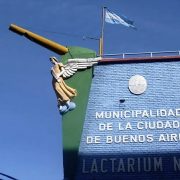


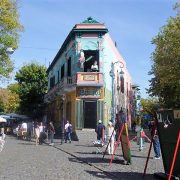
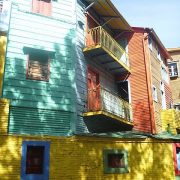
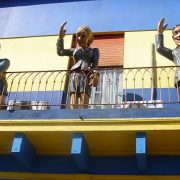
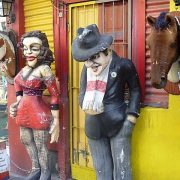
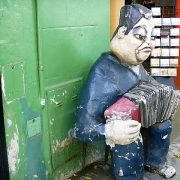
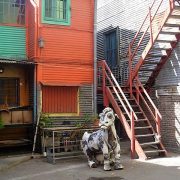

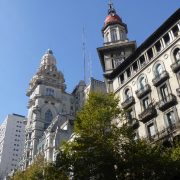
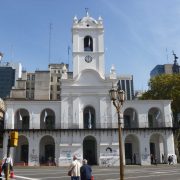
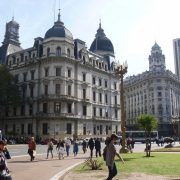
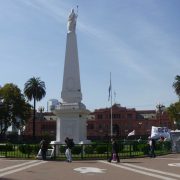
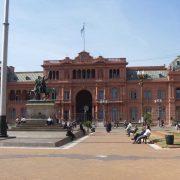
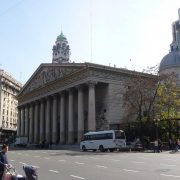
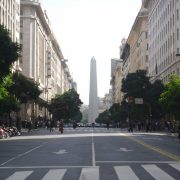

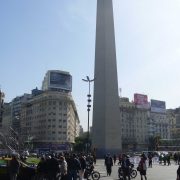
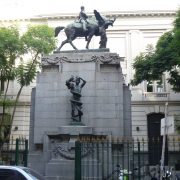
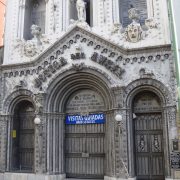
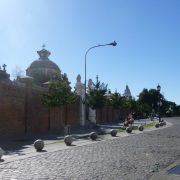
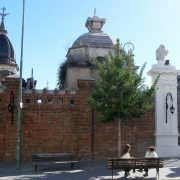
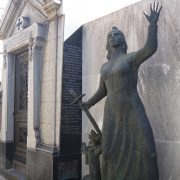
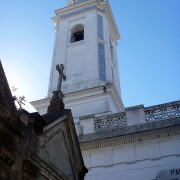




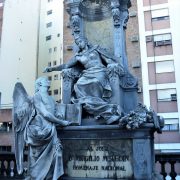

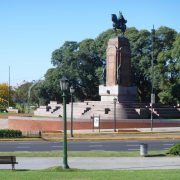
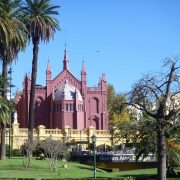

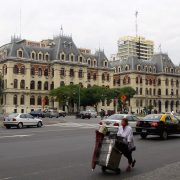
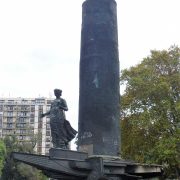
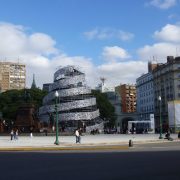
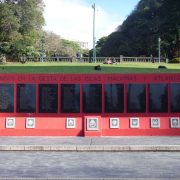
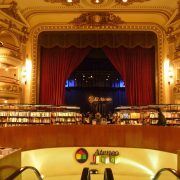



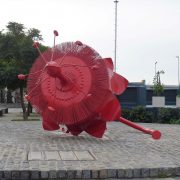
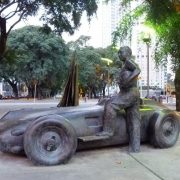
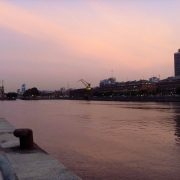
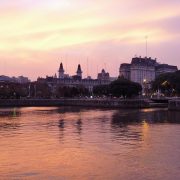
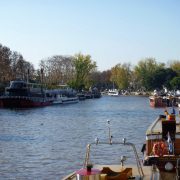
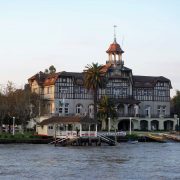

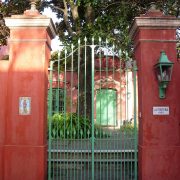
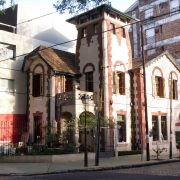
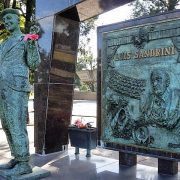
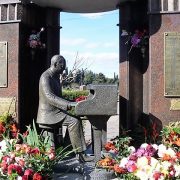


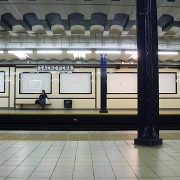
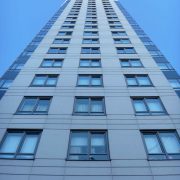
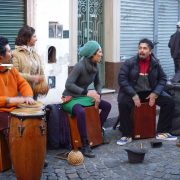
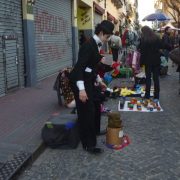
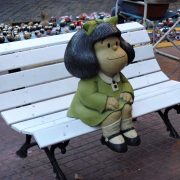
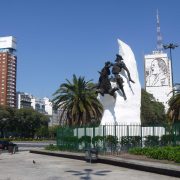



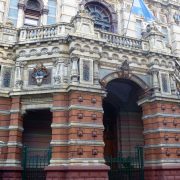
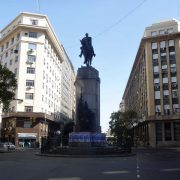

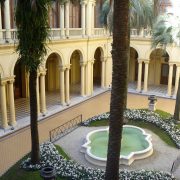

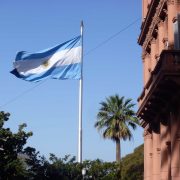
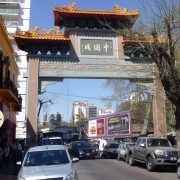
Just came across another related post: "22 Reasons to Love and Hate Buenos Aires and Argentina" – http://nataliesisson.com/travel/22-reasons-to-lov…
Hi Jeff,
Thanks for including my article in here, much appreciated.
This is a great piece, incredibly comprehensive. I wish I had seen it before I was there for 6 months!
Thanks again,
Jeremy
Glad to include it!
Thanks for linking back to us!
De nada. I found a lot of useful information thanks to you guys.
Excellent list. Maybe I shouldn't make my own Buenos Aires Travel Tips page. I'll just link to yours 🙂
Thanks – too kind! Of course, I stole some good stuff from you 😉 We'll have to chat soon as I am curious to know how much longer you will be in BsAs to gather/organize tips for your own site…
Just came across another Graffiti Biking Tour – http://landingpadba.com/tickets-and-tours/graffit…
Top 5 Places for Steak in BA http://insidebuenosaires.com/2011/10/21/top-5-pla…
We All Scream for Ice-cream http://insidebuenosaires.com/2011/10/28/we-all-sc…
Great ideas, detailed reviewa. I´d like to add one experience to the list. The Pope Francis Tour we took last month. We visited the “barrio” where Bergoglio lived as a child, where he played soccer on the corner playground, an amazing church where he was baptised and where he lived before being elected Pope and changed his name to Francis 1. The staff was so accommodating in planning our tour. For just a bit extra, the driver came to pick us up at a local residence. Our driver was amazingly helpful and kind. Our english-speaking guide was excellent, we could understand every word. The company is called Kangoo Tours.